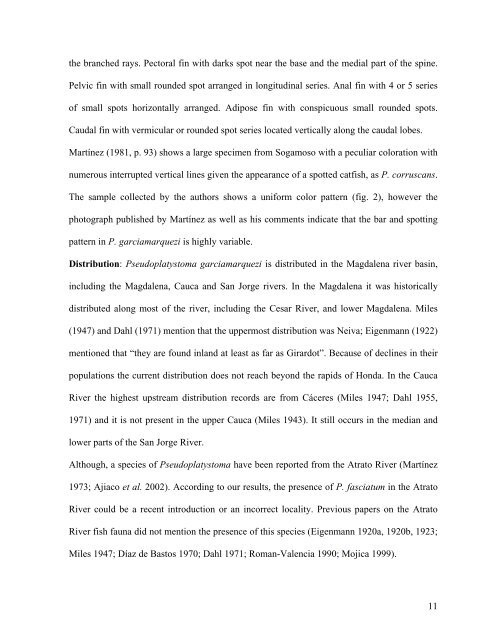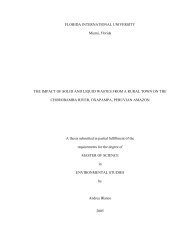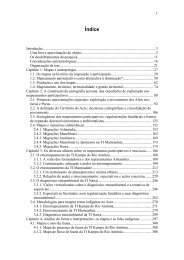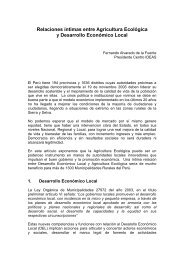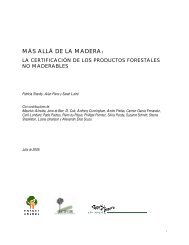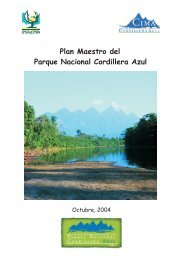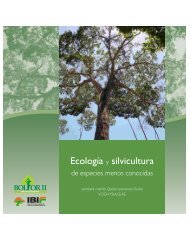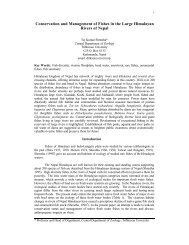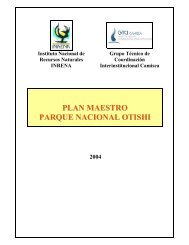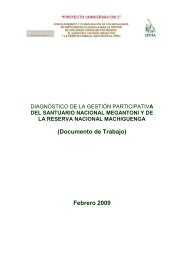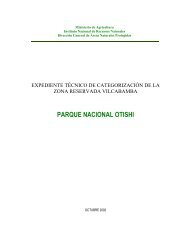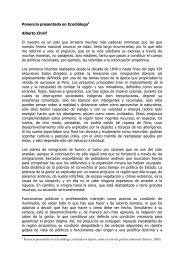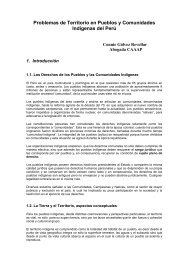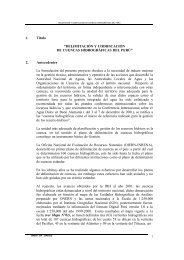PSEUDOPLATYSTOMA GARCIAMARQUEZI, A NEW SPECIES OF ...
PSEUDOPLATYSTOMA GARCIAMARQUEZI, A NEW SPECIES OF ...
PSEUDOPLATYSTOMA GARCIAMARQUEZI, A NEW SPECIES OF ...
You also want an ePaper? Increase the reach of your titles
YUMPU automatically turns print PDFs into web optimized ePapers that Google loves.
the branched rays. Pectoral fin with darks spot near the base and the medial part of the spine.<br />
Pelvic fin with small rounded spot arranged in longitudinal series. Anal fin with 4 or 5 series<br />
of small spots horizontally arranged. Adipose fin with conspicuous small rounded spots.<br />
Caudal fin with vermicular or rounded spot series located vertically along the caudal lobes.<br />
Martínez (1981, p. 93) shows a large specimen from Sogamoso with a peculiar coloration with<br />
numerous interrupted vertical lines given the appearance of a spotted catfish, as P. corruscans.<br />
The sample collected by the authors shows a uniform color pattern (fig. 2), however the<br />
photograph published by Martínez as well as his comments indicate that the bar and spotting<br />
pattern in P. garciamarquezi is highly variable.<br />
Distribution: Pseudoplatystoma garciamarquezi is distributed in the Magdalena river basin,<br />
including the Magdalena, Cauca and San Jorge<br />
rivers. In the Magdalena it was historically<br />
distributed along most of the river, including the Cesar River, and lower Magdalena. Miles<br />
(1947) and Dahl (1971) mention that the uppermost distribution was Neiva; Eigenmann (1922)<br />
mentioned that “they are found inland at least as far as Girardot”. Because of declines in their<br />
populations the current distribution does not reach beyond the rapids of Honda. In the Cauca<br />
River the highest upstream distribution records are from Cáceres (Miles 1947; Dahl 1955,<br />
1971) and it is not present in the upper Cauca (Miles 1943). It still occurs in the median and<br />
lower parts of the San Jorge River.<br />
Although, a species of Pseudoplatystoma have been reported from the Atrato River (Martínez<br />
1973; Ajiaco et al. 2002). According<br />
to our results, the presence of P. fasciatum in the Atrato<br />
River could be a recent introduction or an incorrect locality. Previous papers on the Atrato<br />
River fish fauna did not mention the presence of this species (Eigenmann 1920a, 1920b, 1923;<br />
Miles 1947; Díaz de Bastos 1970; Dahl 1971; Roman-Valencia 1990; Mojica 1999).<br />
11


